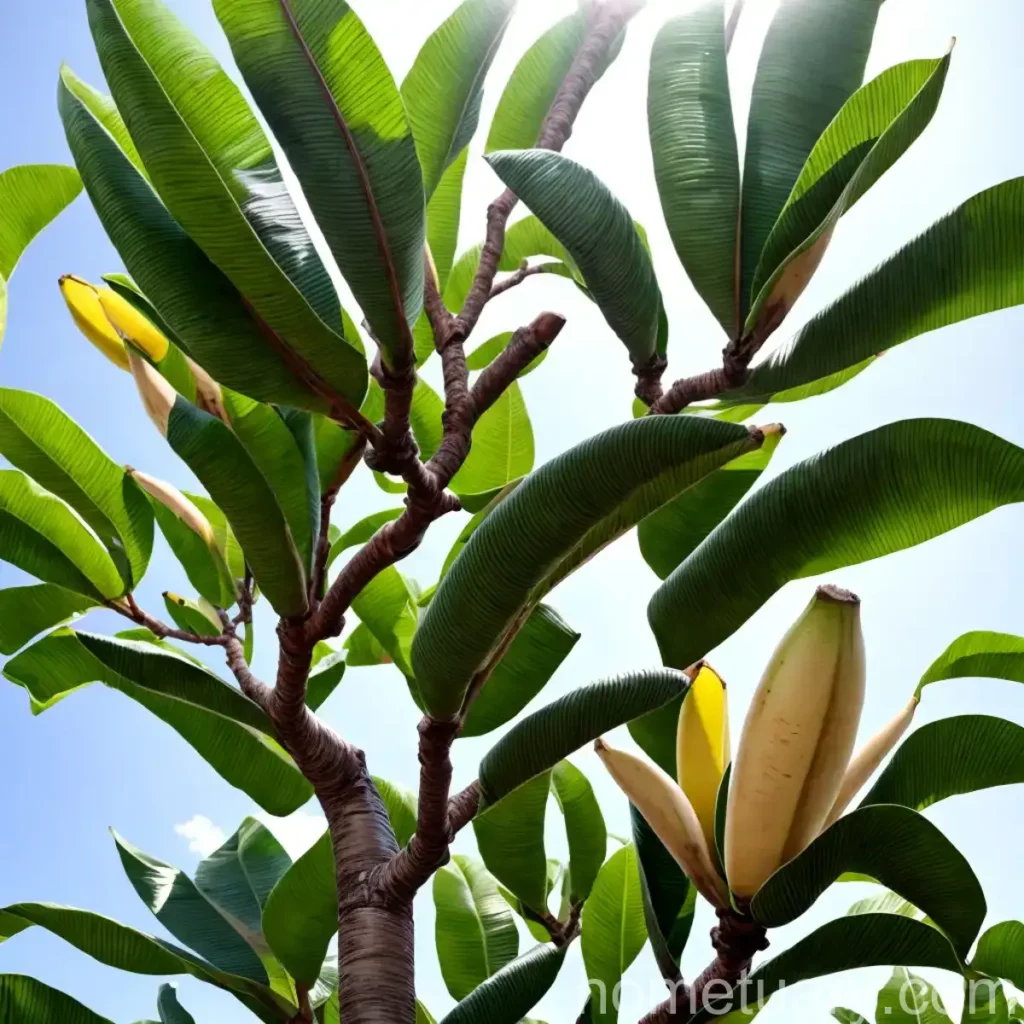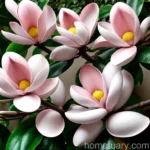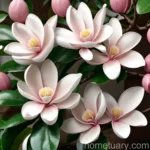All You Need to Know About Banana Magnolia (Magnolia figo)
Banana magnolia, scientifically known as Magnolia figo, is a delightful evergreen shrub that entices gardeners with its enchanting fragrance and stunning blooms. This ornamental plant is native to China and has become popular among horticulturists worldwide for its unique characteristics and versatility. In this comprehensive guide, we will delve into the culture, uses, care, and fascinating facts about banana magnolia, equipping you with the knowledge to cultivate and appreciate this mesmerizing plant.
What is a Banana Magnolia?
Banana magnolia, also referred to as banana shrub, is a member of the Magnoliaceae family, closely related to the magnolia tree. Its botanical name, Magnolia figo, alludes to the fig-like scent exuded by its flowers. This evergreen shrub typically reaches a height of 6 to 10 feet and spreads 4 to 6 feet wide, manifesting a compact and bushy growth habit. It produces lustrous, dark green leaves that enhance its aesthetic appeal throughout the year. The most captivating feature of banana magnolia is its petite, creamy-yellow flowers that emanate a sweet, fruity fragrance reminiscent of ripe bananas, hence its popular name.
Key Takeaways – Banana Magnolia (Magnolia figo)
Before delving into the specifics of cultivating and caring for banana magnolia, let’s explore the key features and takeaways associated with this captivating plant.
- Scientific Name: Magnolia figo
- Common Names: Banana magnolia, Banana shrub, Figo magnolia
- Origin: China
- Growth Habit: Evergreen shrub
- Height: 6 to 10 feet
- Spread: 4 to 6 feet
- Fragrance: Fruity, reminiscent of ripe bananas
- Flower Color: Creamy-yellow
- Foliage: Lustrous dark green
- Uses: Ornamental, Fragrance, Landscaping
Now, let’s explore the cultural significance, uses, and the intricate care requirements for banana magnolia.
Culture
Understanding the cultural preferences of banana magnolia is pivotal for ensuring its optimal growth and development. From water and sunlight requirements to soil conditions and fertilization, let’s decode the culture of this enchanting shrub.
Uses
Ornamental Beauty
Banana magnolia serves as an exceptional ornamental plant, adding elegance and charm to gardens, courtyards, and landscapes. Its dainty, banana-scented blooms allure pollinators and nature enthusiasts, creating a serene and inviting ambiance.
Fragrance
The fruity and enchanting fragrance of banana magnolia makes it a coveted addition to gardens and outdoor spaces. Its aromatic flowers are often used for creating captivating flower arrangements and adding a delightful scent to indoor areas.
Landscaping
Due to its compact growth habit and captivating visual appeal, banana magnolia is extensively used in landscaping projects, ranging from cottage gardens to commercial establishments. It offers a versatile and visually appealing element to diverse landscaping designs.
Water
Banana magnolia thrives in moist, well-drained soils. While it demonstrates tolerance to occasional dry spells, consistent moisture is vital for promoting healthy growth and prolific flowering. Adequate watering, especially during periods of drought, supports the plant’s overall vigor and floral display.
Water Requirements
- Established Plants: Water deeply once a week, ensuring the soil remains consistently moist, but not waterlogged.
- Young Plants: Water regularly to facilitate their establishment and ensure they receive ample moisture during their initial growth stages.
Sunlight
Optimal sunlight exposure plays a pivotal role in stimulating the abundant blooming and robust growth of banana magnolia. Providing the shrub with the appropriate sunlight conditions ensures the development of sturdy branches, vibrant foliage, and profuse blooms.
Sun Exposure
- Full Sun: Banana magnolia flourishes in locations with full sun exposure, receiving at least 6 to 8 hours of direct sunlight daily.
- Partial Shade: It can also thrive in partial shade, particularly in regions with intense afternoon sun or during periods of extreme heat.
Fertilizer
Feeding banana magnolia with a balanced, slow-release fertilizer enriches the soil and supplies the necessary nutrients for sustained growth and flowering. Choosing an appropriate fertilizer and applying it at the right time is integral to promoting the overall health and vigor of the plant.
Fertilization Guidelines
- Timing: Apply a slow-release, balanced fertilizer in early spring before the onset of new growth.
- Frequency: Repeat the fertilizer application once or twice during the growing season to sustain the plant’s nutritional requirements.
Soil
Banana magnolia thrives in well-drained, slightly acidic soils that provide a fertile and conducive environment for its roots to explore and establish. Understanding the soil preferences and composition assists in optimizing the plant’s growth and blooming potential.
Soil Requirements
- Acidity: Slightly acidic soil with a pH range of 5.0 to 6.5 is ideal for banana magnolia.
- Drainage: Well-drained soil prevents waterlogging and safeguards the roots from suffocation and diseases.
Pruning
Pruning plays a crucial role in shaping the growth habit of banana magnolia and rejuvenating the plant to promote healthy and vigorous blooming. Strategic pruning also helps in controlling the size of the shrub and enhancing its overall appearance.
Pruning Tips
- Timing: Conduct light pruning after the flowering period to maintain a compact and bushy silhouette.
- Deadheading: Removing spent flowers stimulates the production of new buds and prolongs the blooming season.
Propagation
Propagating banana magnolia allows horticulturists to cultivate new plants and expand their collection of this enchanting shrub. Employing suitable propagation methods ensures the successful establishment of new banana magnolia specimens.
Propagation Techniques
- Softwood Cuttings: Harvest softwood cuttings in early summer and propagate them in a well-draining, sterile potting mix.
- Air Layering: Encourage the formation of roots on a healthy branch by employing the air layering technique, facilitating successful propagation.
Container Popularity
The compact and bushy growth habit of banana magnolia makes it an attractive option for container cultivation. It thrives in containers placed on patios, balconies, and other outdoor settings, contributing to the ornamental beauty and fragrance of the surroundings.
Container Gardening
- Selection: Opt for a spacious container with adequate drainage holes to accommodate the roots and support healthy growth.
- Soil Mix: Utilize a well-draining potting mix with a slightly acidic pH to create an optimized growing environment for the plant.
Common Diseases and Pests
Despite being a resilient and relatively low-maintenance plant, banana magnolia is susceptible to certain diseases and pests that can hinder its growth and vitality. Familiarizing yourself with the symptoms and preventive measures aids in preserving the health and vigor of the plant.
Disease Diagnosis
Leaf Spot
Leaf spot disease manifests as conspicuous, dark spots on the foliage, often leading to premature defoliation and diminished vitality. Proper diagnosis and timely intervention are essential to curb the spread of this fungal infection and restore the plant’s health.
Powdery Mildew
The powdery mildew fungus forms a distinctive, powdery white layer on the leaves and shoots of banana magnolia, impairing its photosynthetic capacity and overall vigor. Implementing proactive measures is pivotal in preventing and controlling this prevalent disease.
Common Pests
Aphids
Aphids are common pests that infest banana magnolia, sapping the plant’s vital fluids and impeding its growth. Detecting and mitigating aphid infestations safeguards the plant from damage and preserves its ornamental and fragrant attributes.
Scale Insects
Scale insects encrust themselves on the stems and leaves of banana magnolia, posing a threat to its overall health and beauty. Identifying these pests and employing targeted control measures prevents widespread infestations and sustains the plant’s well-being.
Botanist’s Tips
Now that we have uncovered the foundational aspects of banana magnolia culture and care, let’s glean valuable insights and recommendations from botanists and horticulture experts to elevate our understanding and appreciation of this captivating plant.
Best Practices
- Consistent Moisture: Maintaining steady moisture levels in the soil throughout the growing season fosters robust growth and abundant flowering in banana magnolia.
- Pruning Vigilance: Regularly monitor the plant for the presence of dead or damaged limbs and promptly prune them to ensure its health and aesthetic appeal.
- Regular Inspections: Conduct frequent inspections to detect and address any signs of diseases or pests early on, preventing their escalation and impact on the plant’s vitality.
Enhanced Care
- Mulching: Apply a layer of organic mulch around the base of the plant to conserve soil moisture, deter weed growth, and fortify the soil with essential nutrients.
- Air Circulation: Foster adequate air circulation around the plant by spacing multiple specimens appropriately, reducing the risk of fungal diseases and promoting overall vigor.
Fun Facts
Uncovering the intriguing and captivating aspects of banana magnolia enriches our experience and admiration for this remarkable plant. Let’s explore some fun and fascinating facts that illuminate the unique allure of banana magnolia.
- Historical Significance: Banana magnolia has a rich historical legacy in Chinese culture, where its fragrant blooms were utilized in traditional ceremonies and celebrations.
- Wildlife Attraction: The aromatic flowers of banana magnolia entice a myriad of pollinators, including butterflies and bees, enhancing the ecological value of this ornamental shrub.
- Cultural Symbolism: In some regions, banana magnolia is symbolically associated with tranquility and serenity, often finding a place in serene and contemplative garden settings.
In conclusion, banana magnolia, with its captivating fragrance, vibrant blooms, and ornamental charm, epitomizes botanical splendor and allure. By comprehending its cultural preferences, care requirements, and fascinating attributes, we elevate our ability to cultivate and cherish this enchanting shrub, perpetuating its legacy and allure in gardens and landscapes worldwide.
Enhanced with a wealth of knowledge and appreciation, let’s embark on our journey to embrace the beauty and fragrance of banana magnolia, infusing our surroundings with nature’s exquisite treasure.
For further in-depth exploration and guidance on banana magnolia cultivation and care, I recommend visiting the following resources:
Now, armed with a profound understanding of banana magnolia, let’s embark on our journey to cultivate and appreciate this alluring shrub in our gardens and landscapes.
Happy gardening!















